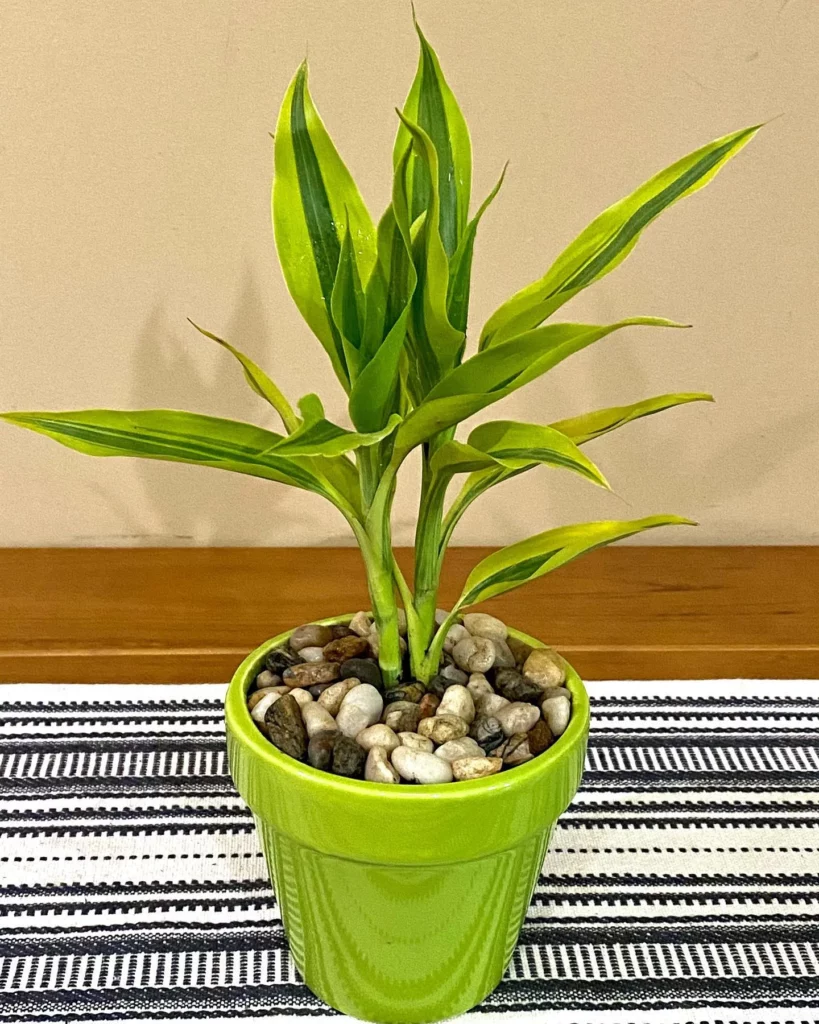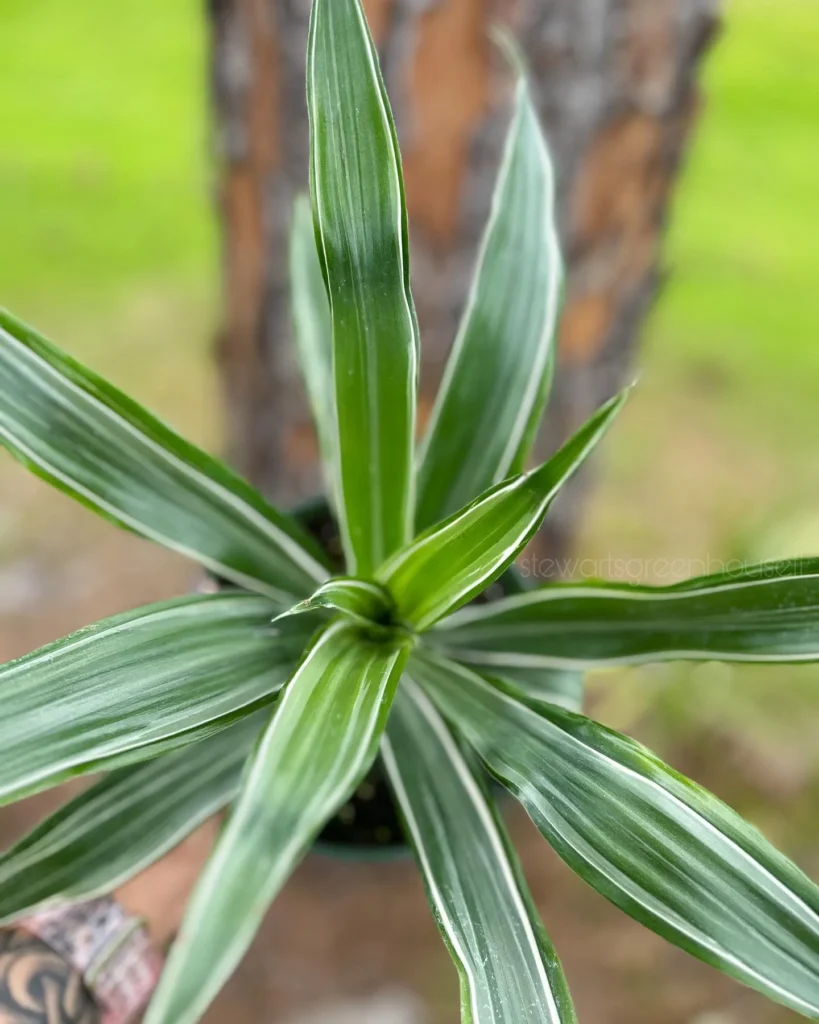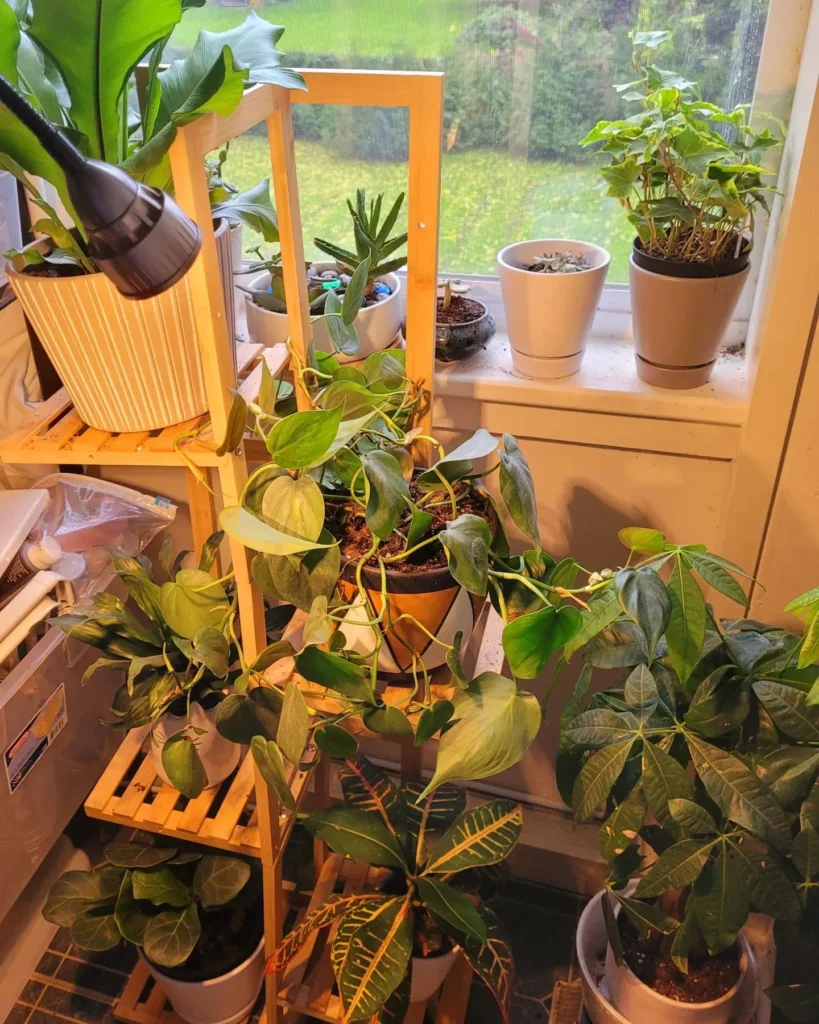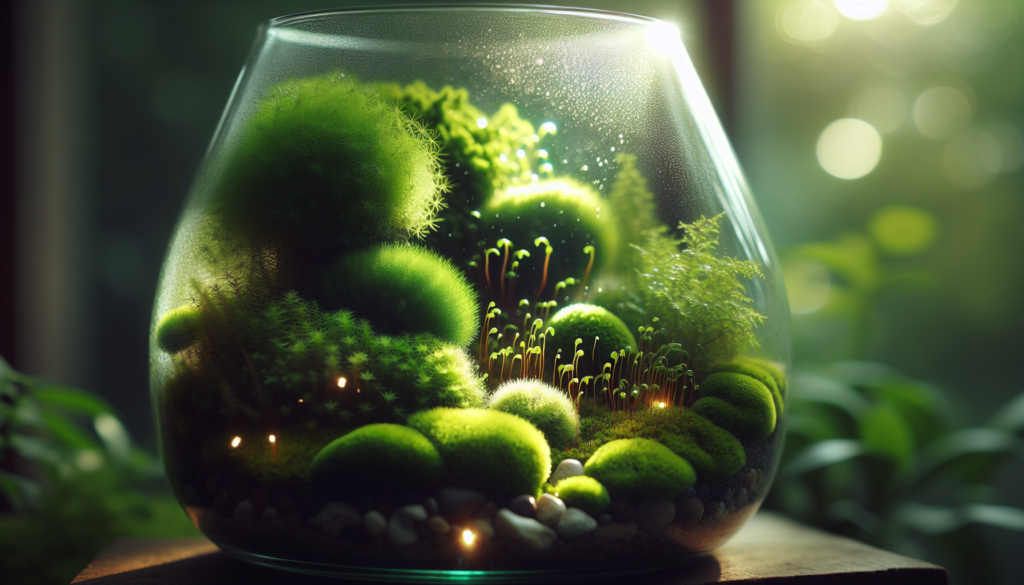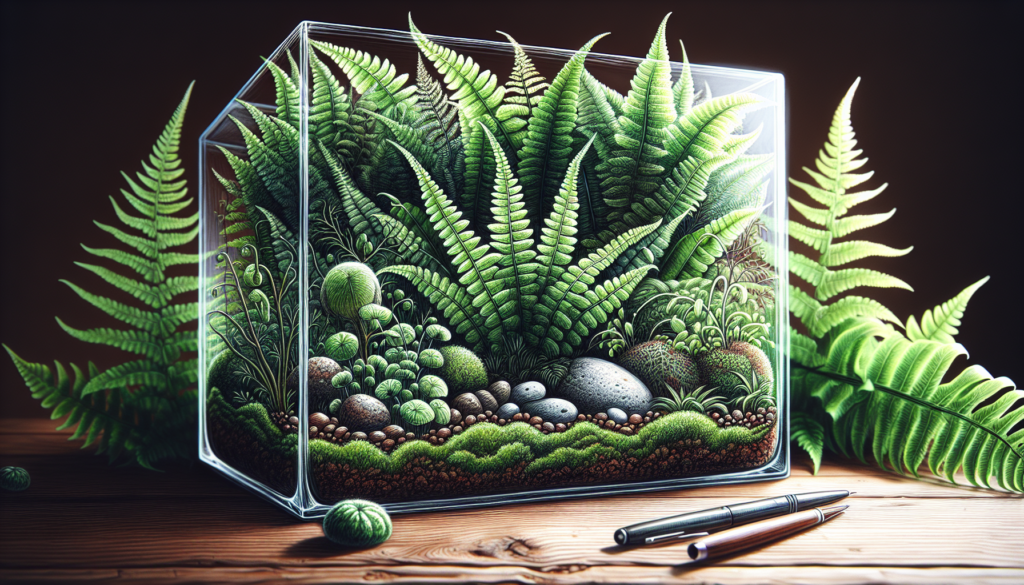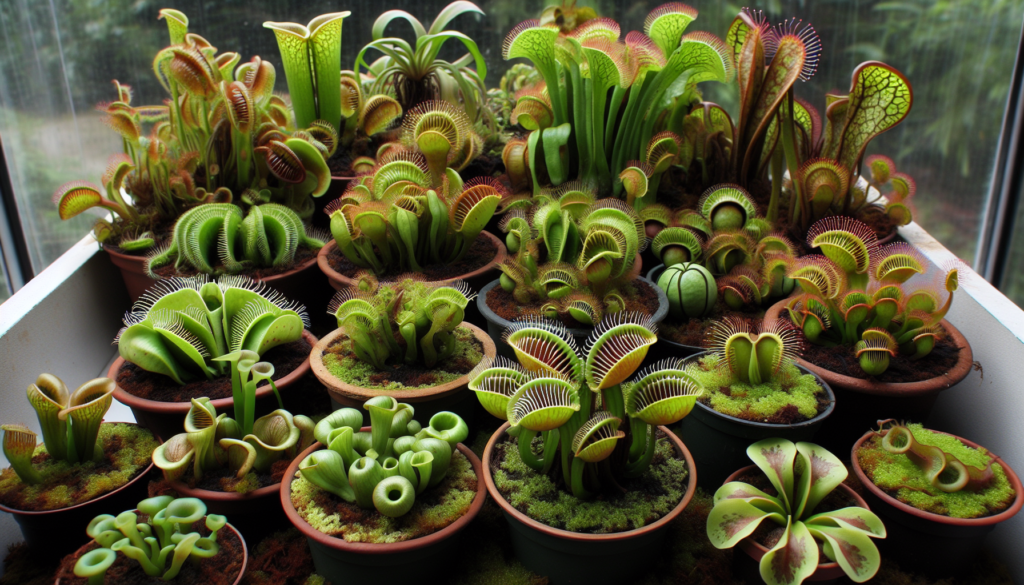The Warneckii Dracaena, also known as Striped Dracaena or Dragon plant, is a stunning indoor plant that is admired for its unique appearance. This popular houseplant features lance-shaped leaves with eye-catching white or gray stripes, creating a visually striking contrast against its dark green foliage. The leaves give the plant a bushy and full appearance, making it a delightful addition to any indoor space.
Appearance of Warneckii Dracaena
The Warneckii Dracaena can grow up to 5 feet in height when cultivated indoors, making it a perfect choice for those who prefer smaller plants. However, when planted outdoors in the right conditions, it can reach an impressive height of up to 10 feet, creating a statement in any garden or landscape.
One of the remarkable characteristics of the Warneckii Dracaena is its evergreen foliage. The vibrant green leaves maintain their color and beauty throughout the year, adding a touch of natural freshness to any room or outdoor area. Even during dry months, the white or gray stripes on the leaves retain their striking appearance, enhancing the overall visual appeal of the plant.
Although blooms are rare when grown indoors, the Warneckii Dracaena produces round creamy-yellow blooms during the summer months when planted in suitable outdoor conditions. These delicate flowers add an extra touch of beauty to the plant, complementing its already captivating appearance.
Light Requirements for Warneckii Dracaena
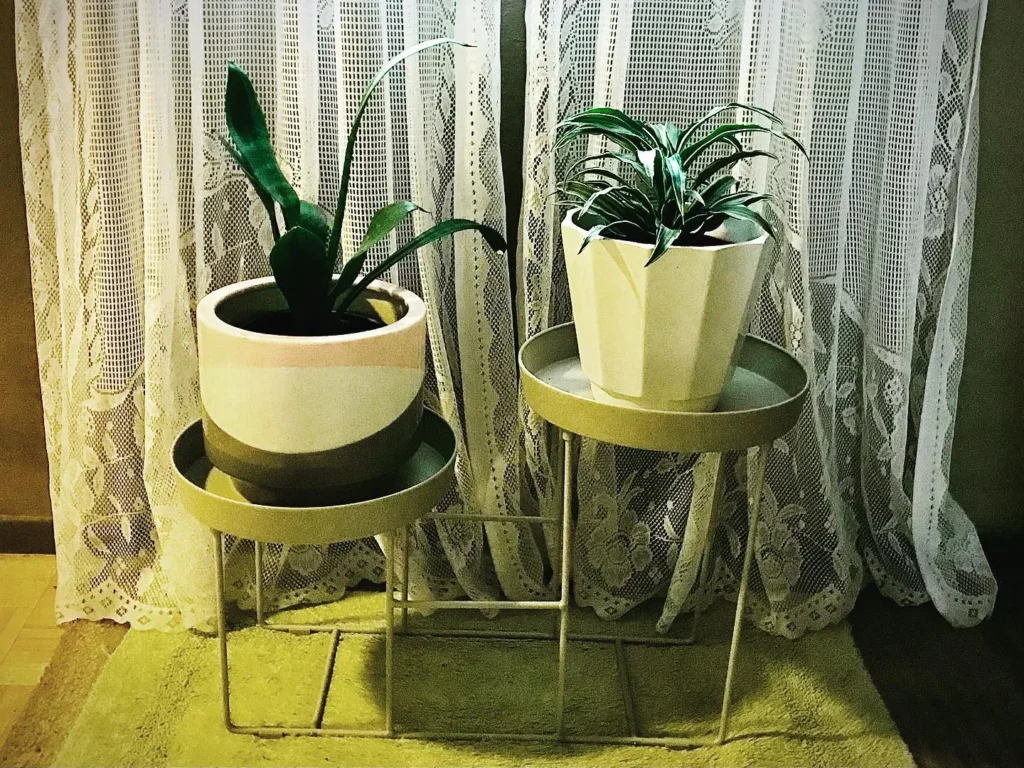
Proper lighting is crucial for the healthy growth of the Warneckii Dracaena. This versatile indoor plant thrives in well-lit spaces with moderate to bright indirect sunlight. While it can tolerate low light conditions, it may grow at a slower rate and experience slight fading of foliage patterns.
To maintain the plant’s vibrant growth, it is recommended to provide at least four hours of bright, indirect sunlight each day. Placing the Warneckii Dracaena near an east or west-facing window is ideal for optimal lighting.
When positioning your plant, consider the natural light available in your space, ensuring it receives adequate light without being directly exposed to harsh sunlight. By providing the right amount of light, you can help your Warneckii Dracaena thrive and showcase its beautiful striped leaves.
Watering Warneckii Dracaena
The Warneckii Dracaena, also known as Striped Dracaena or Dragon plant, requires proper watering to thrive and maintain optimal health. Here are some important guidelines to keep in mind when watering your Warneckii Dracaena:
- Watering Frequency: It is recommended to water the plant every 5 to 7 days, allowing the top few inches of soil to dry out between waterings. However, the frequency may vary depending on factors such as the plant’s location, humidity levels, and season.
- Avoid Overwatering: Overwatering can be detrimental to the Warneckii Dracaena and can lead to root rot. Ensure that the plant’s pot has proper drainage to allow excess water to escape. It’s better to underwater than to overwater the plant.
- Monitor Moisture Levels: Check the moisture level of the soil before watering. Insert your finger about an inch into the soil, and if it feels dry, it’s time to water the plant. If it still feels moist, wait a few more days before watering.
- Prevent Brown Leaf Tips: Inadequate watering can cause the tips of the leaves to turn brown. To avoid this, ensure that the plant receives sufficient water without waterlogging the soil. Proper drainage and routine checks are crucial.
- Water Quality: Warneckii Dracaenas are sensitive to fluoride, which is commonly found in tap water. To prevent fluoride buildup, it is recommended to use distilled water or let tap water sit overnight before watering the plant.
- Humidity Considerations: Warneckii Dracaenas appreciate moderate humidity levels. Misting the plant occasionally or placing a tray of water nearby can create a more humid environment, benefiting the plant’s overall health.
Fertilizing Warneckii Dracaena

The Warneckii Dracaena is a low-maintenance plant when it comes to fertilization. It does not require frequent feeding, but providing it with the right nutrients can promote healthy growth and vibrant foliage. Here are some essential tips for fertilizing your Warneckii Dracaena:
- Choose a balanced liquid fertilizer: Use a well-balanced liquid fertilizer specifically formulated for indoor plants. Ensure that it contains a balanced ratio of nitrogen, phosphorus, and potassium to meet the plant’s nutritional needs.
- Dilute the fertilizer: To avoid over-fertilizing, dilute the liquid fertilizer to half the recommended strength. This will provide the plant with adequate nutrients without risking fertilizer burn.
- Fertilize during the growing season: The Warneckii Dracaena typically goes through a growth phase during the spring and summer months. This is the ideal time to fertilize the plant, as it is actively taking up nutrients to support its growth.
- Follow the recommended dosage: Always follow the instructions provided on the fertilizer packaging. Over-fertilizing can be harmful to the plant and may result in burned leaf tips. Remember, less is often more when it comes to fertilizing.
In addition to regular fertilization, it is also beneficial to flush the potting soil periodically. Flushing helps prevent mineral build-up in the soil, ensuring optimal nutrient absorption by the plant. To flush the soil, thoroughly water the plant until water drains out from the bottom of the pot. Repeat this process a few times, allowing excess water to flush out any accumulated salts or minerals.
Potting Warneckii Dracaena
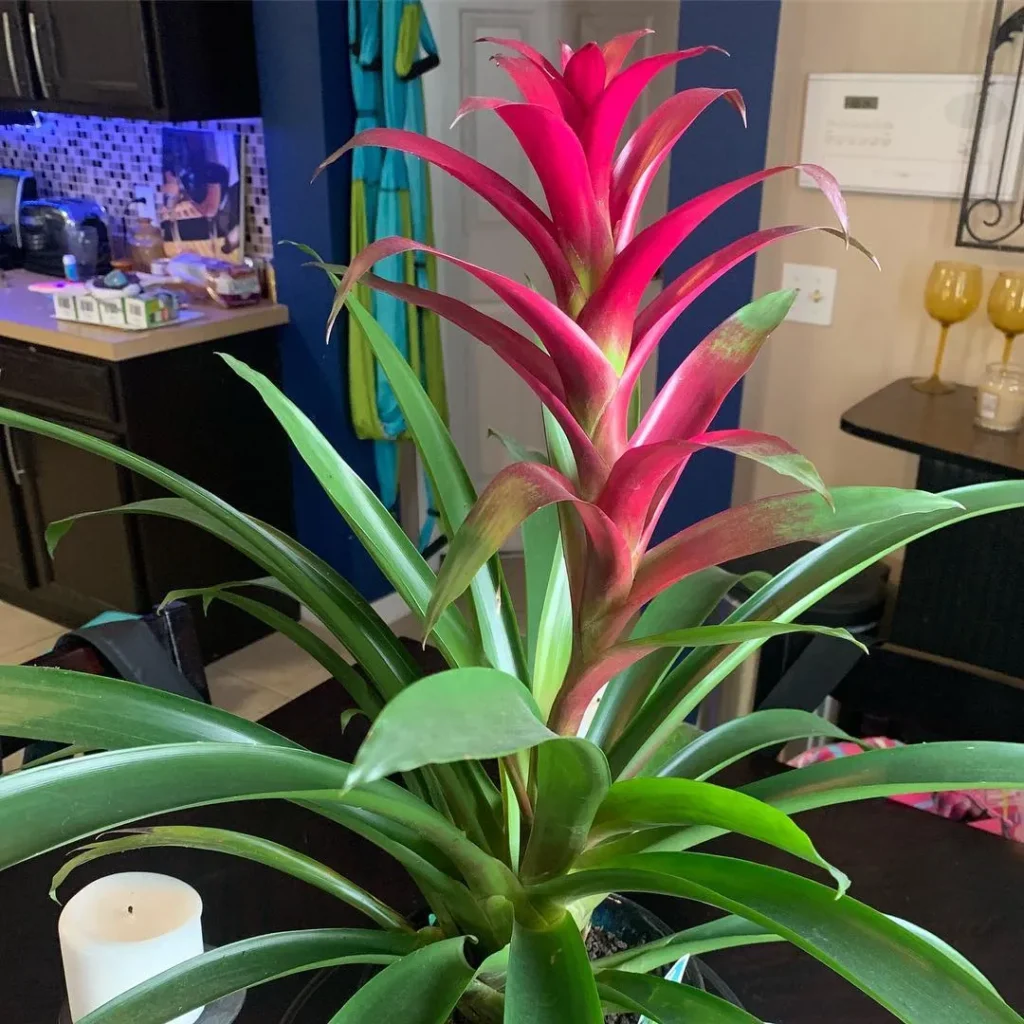
Proper potting is essential for the healthy growth of Warneckii Dracaena. Follow these guidelines to ensure optimal conditions for your plant:
- Choose well-draining soil: Warneckii Dracaena thrives in soil that allows excess water to drain away. Opt for a loam-based potting soil that does not contain perlite, as too much perlite can lead to waterlogging.
- Use a pot with drainage holes: It is important to select a pot with proper drainage holes to prevent water from accumulating at the bottom. This will prevent root rot and ensure the plant’s overall health.
- Repot as needed: As the Warneckii Dracaena grows, it will eventually outgrow its current pot. Repotting should be done every 3 years or when the plant becomes root-bound. This allows the plant to establish in fresh soil and provides more room for its roots to grow.
- Trim roots and foliage during repotting: When repotting, carefully remove the plant from its current pot and trim any rotten or decaying roots. Additionally, you can trim some of the foliage to maintain the desired size and shape of the plant.
Propagation of Warneckii Dracaena
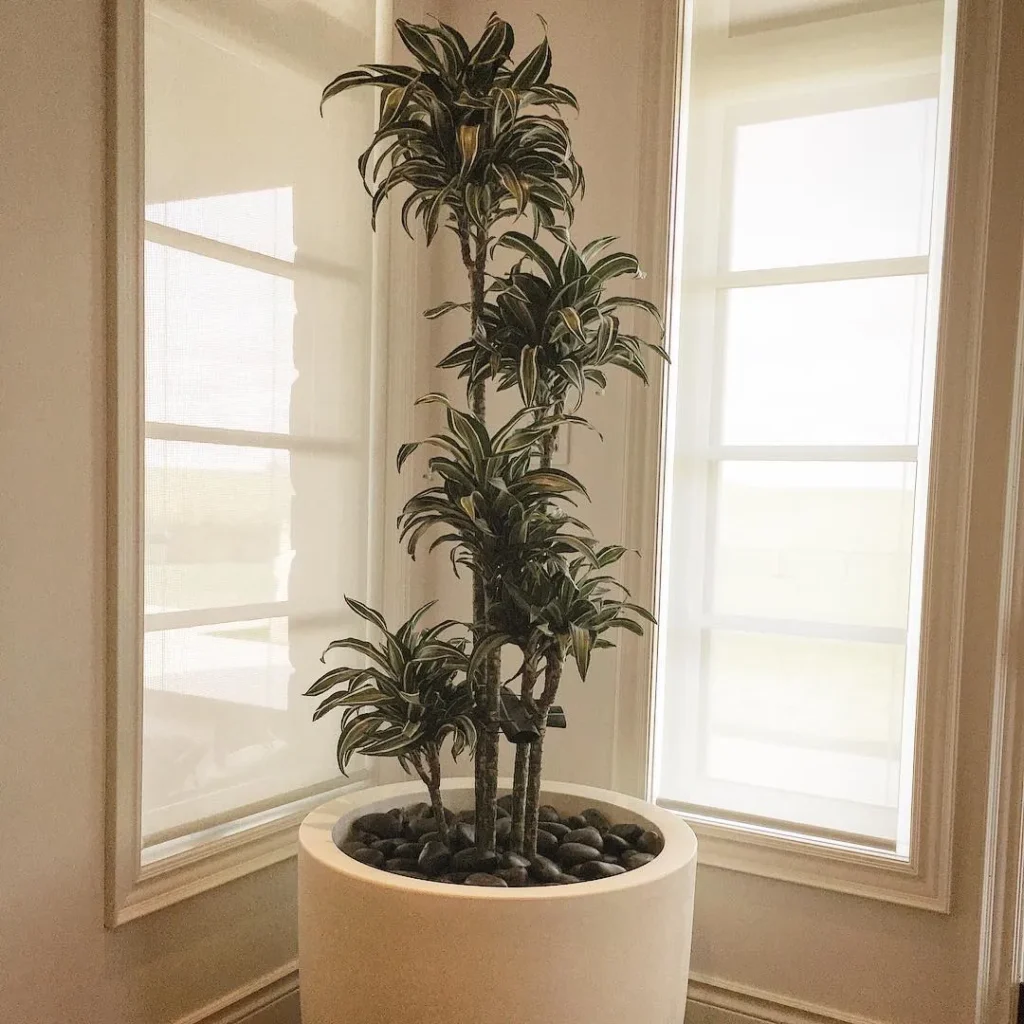
If you’re looking to expand your collection of Warneckii Dracaena plants, propagation is a great way to do it. Luckily, propagating Warneckii Dracaena is relatively straightforward and can be done through stem cuttings. Here’s how:
- Start by selecting a healthy woody stem from the parent plant. Make sure the stem is long enough to be divided into three sections: a root section, a middle segment, and a crown.
- Using a clean, sharp knife or pruning shears, carefully split the stem into the three sections. Take extra care to make clean cuts to prevent any damage to the stem.
- Plant the root section in sterile potting soil. Make sure to keep the soil warm and moist to encourage root development. You can cover the container with plastic wrap or use a small greenhouse to create a humid environment.
- Trim the remaining stem above the crown to stimulate new growth. The crown is where the new leaves will emerge from.
- Plant the middle part of the stem in fresh soil, ensuring that the cut end is buried in the soil. This section will develop roots and eventually grow into a new plant.
- To promote root development, you can dip the cut ends of the stem sections in a rooting hormone before planting.
- Propagation is best done in the spring when the plant is actively growing. This will increase the chances of success and ensure that the new plants have enough time to establish themselves before the dormant period.
Growth and Development of Warneckii Dracaena
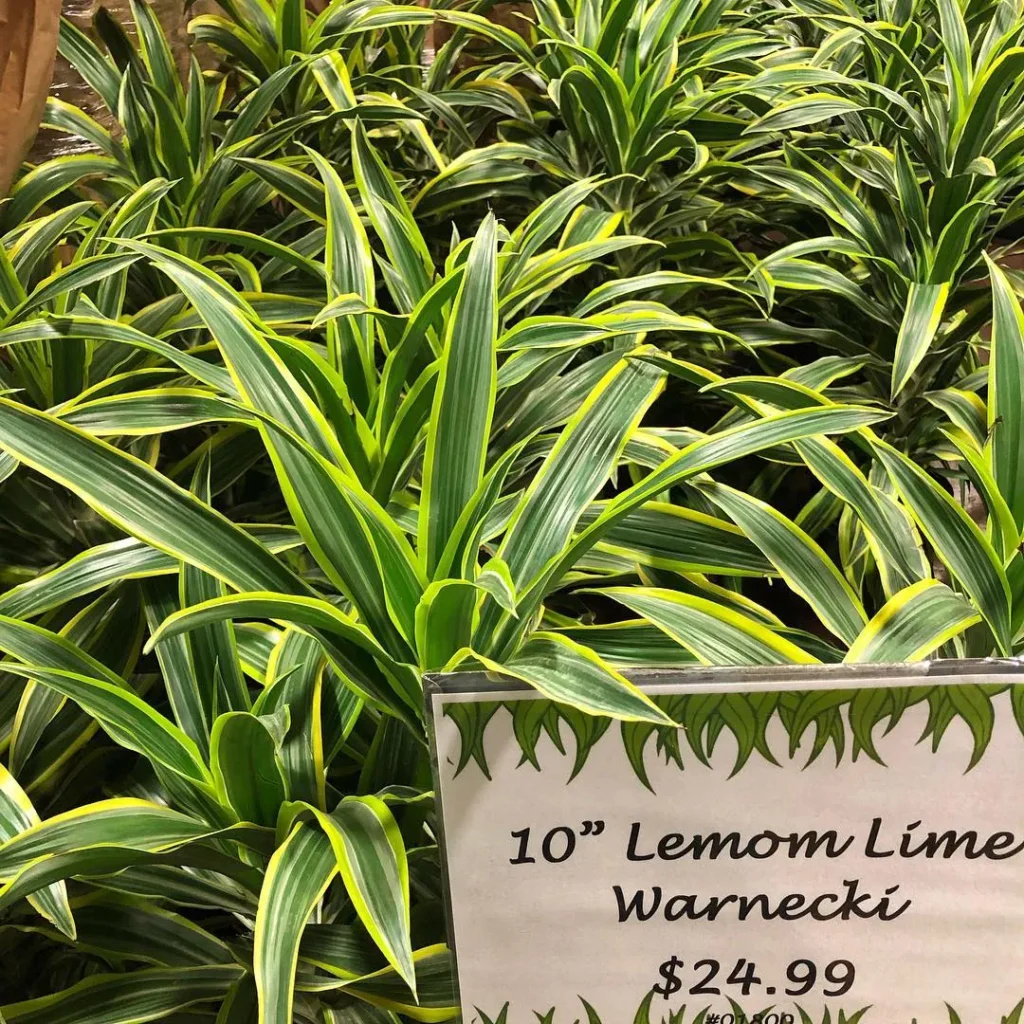
The Warneckii Dracaena is an indoor plant that exhibits a slow growth rate, making it an excellent choice for those seeking a low-maintenance plant. With proper care, this plant can thrive for up to 40 years, providing long-lasting beauty and enjoyment. While its typical height at maturity is around 5 feet, it has the potential to grow even taller when planted outdoors, enhancing the overall aesthetic of any garden or landscape.
The foliage of the Warneckii Dracaena is adorned with striking patterns of white or gray stripes, contributing to its unique charm. However, in situations with shade or low light, these patterns may fade slightly. To ensure optimal growth and development, it is crucial to provide adequate lighting conditions for this plant.
Regular pruning and rotation of the pot are essential for the Warneckii Dracaena. Pruning allows for the removal of any yellow or dry leaves, promoting healthier growth and overall plant vitality. Rotating the pot enables even exposure to sunlight, preventing lopsided growth and ensuring balanced development.
Pests and Diseases of Warneckii Dracaena
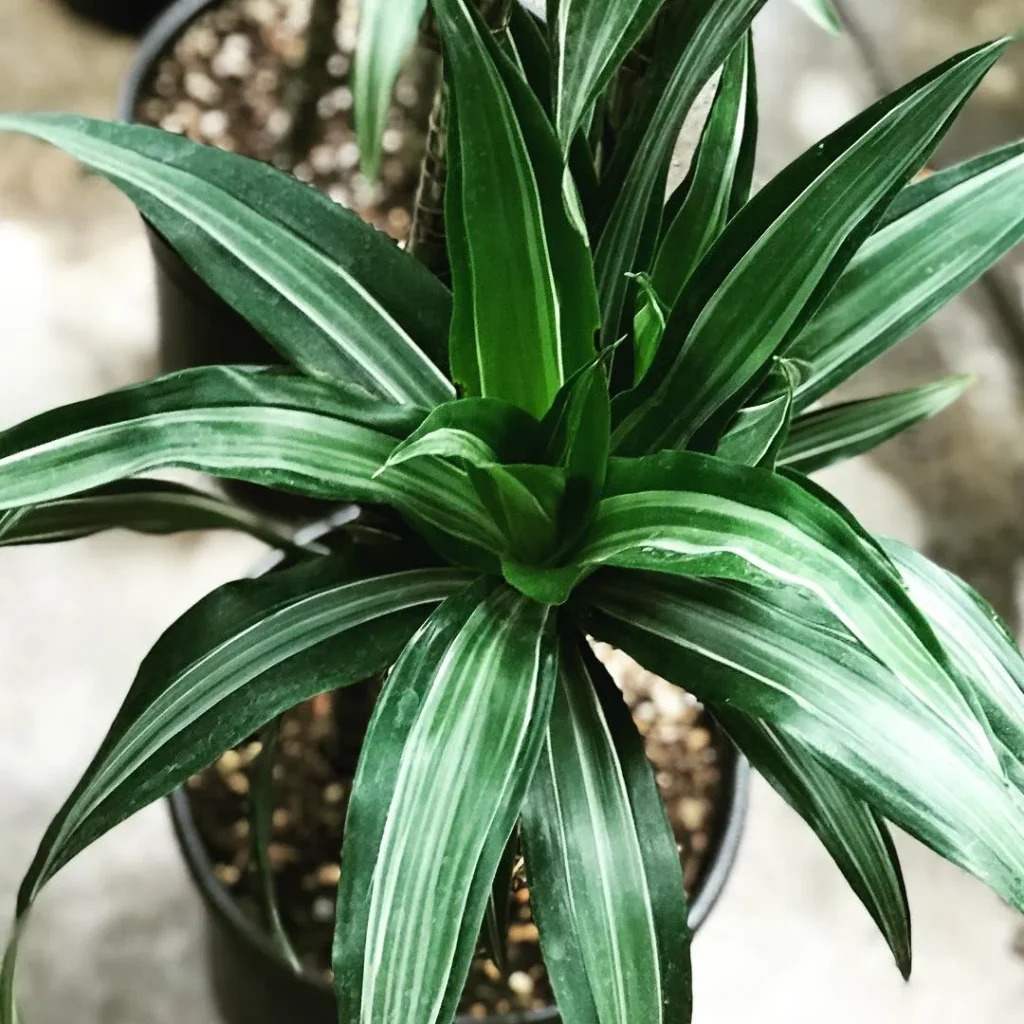
The Warneckii Dracaena is a hardy plant that is relatively resistant to pests and diseases. However, like any plant, it can still encounter some issues. Two common pests that may affect the Warneckii Dracaena are spider mites and mealybugs. These tiny creatures can suck the sap from the leaves and cause damage to the plant. If you notice any signs of infestation, such as webbing or small cotton-like clusters on the leaves, it is important to take action promptly.
One effective method for treating spider mites and mealybugs is to use neem oil. Dilute the neem oil according to the manufacturer’s instructions and spray it onto the affected areas of the plant. Alternatively, you can wipe the leaves with a mixture of water, baking soda, and dish soap to help control the pests.
Another potential issue to watch out for is root rot, which can occur when the Warneckii Dracaena is overwatered or the soil does not drain properly. Root rot can lead to wilting leaves, yellowing, and even death of the plant. To prevent root rot, make sure your plant is potted in well-draining soil, and allow the top inch or two of the soil to dry out between waterings. You should also ensure that the pot has drainage holes to allow excess water to escape. Regularly inspect the plant and the soil for any signs of mold growth, and adjust your watering routine accordingly.
By staying vigilant and taking proper care of your Warneckii Dracaena, you can keep it healthy and free from pests and diseases. Regularly inspect your plant for any signs of infestation or root rot, and take appropriate measures to address them. With the right care, your Warneckii Dracaena can thrive and bring beauty to your indoor space for years to come.
FAQ
Q: How often should I water my Warneckii Dracaena?
A: The Warneckii Dracaena should be watered when the top of the soil is dry to the touch, but it should not be allowed to become bone-dry. It is recommended to water the plant every 5 to 7 days, although the frequency may vary depending on the plant’s location. Overwatering can lead to root rot, so it is important to ensure proper drainage.
Q: How often should I fertilize my Warneckii Dracaena?
A: The Warneckii Dracaena does not require frequent fertilization. It is best to fertilize the plant with a balanced liquid fertilizer diluted to half the recommended strength during the growing season, which typically includes spring and summer. Over-fertilization can lead to burned leaf tips, so it is important to follow the recommended dosage. It is also beneficial to flush the potting soil periodically to prevent mineral build-up.
Q: How should I pot my Warneckii Dracaena?
A: The Warneckii Dracaena should be planted in well-draining soil to prevent waterlogging. A loam-based potting soil that does not contain perlite is recommended. It is important to use a pot with drainage holes to allow excess water to escape. Repotting is typically necessary every 3 years as the plant outgrows its current pot. When repotting, it is important to remove any rotten or decaying roots and trim the plant back to the desired size.
Q: How can I propagate my Warneckii Dracaena?
A: The Warneckii Dracaena can be propagated through stem cuttings. Simply take a woody stem and split it into three sections: a root section, a middle segment, and a crown. Plant the root section in sterile potting soil and keep it warm and moist. Trim the remaining stem to encourage new growth, and plant the middle part of the stem in fresh soil. Use rooting hormone at the cut ends to stimulate root development. Propagation should be done in the spring when the plant is actively growing.
Q: How tall does the Warneckii Dracaena grow?
A: The Warneckii Dracaena has a slow growth rate and typically reaches a height of 5 feet at maturity, although it can grow taller if planted outdoors. Regular pruning and rotation of the pot can promote even growth and encourage healthy development of the plant.
Q: What pests and diseases are common for the Warneckii Dracaena?
A: The Warneckii Dracaena is relatively resistant to pests and diseases. However, it can be susceptible to spider mites and mealybugs. Infestations can be treated with neem oil or by wiping the leaves with a mixture of water, baking soda, and dish soap. Overwatering can lead to root rot and mold growth in the soil, so it is important to ensure proper drainage and avoid excessive watering. Regularly inspect the plant for any signs of pests or diseases and take appropriate measures to address them.

